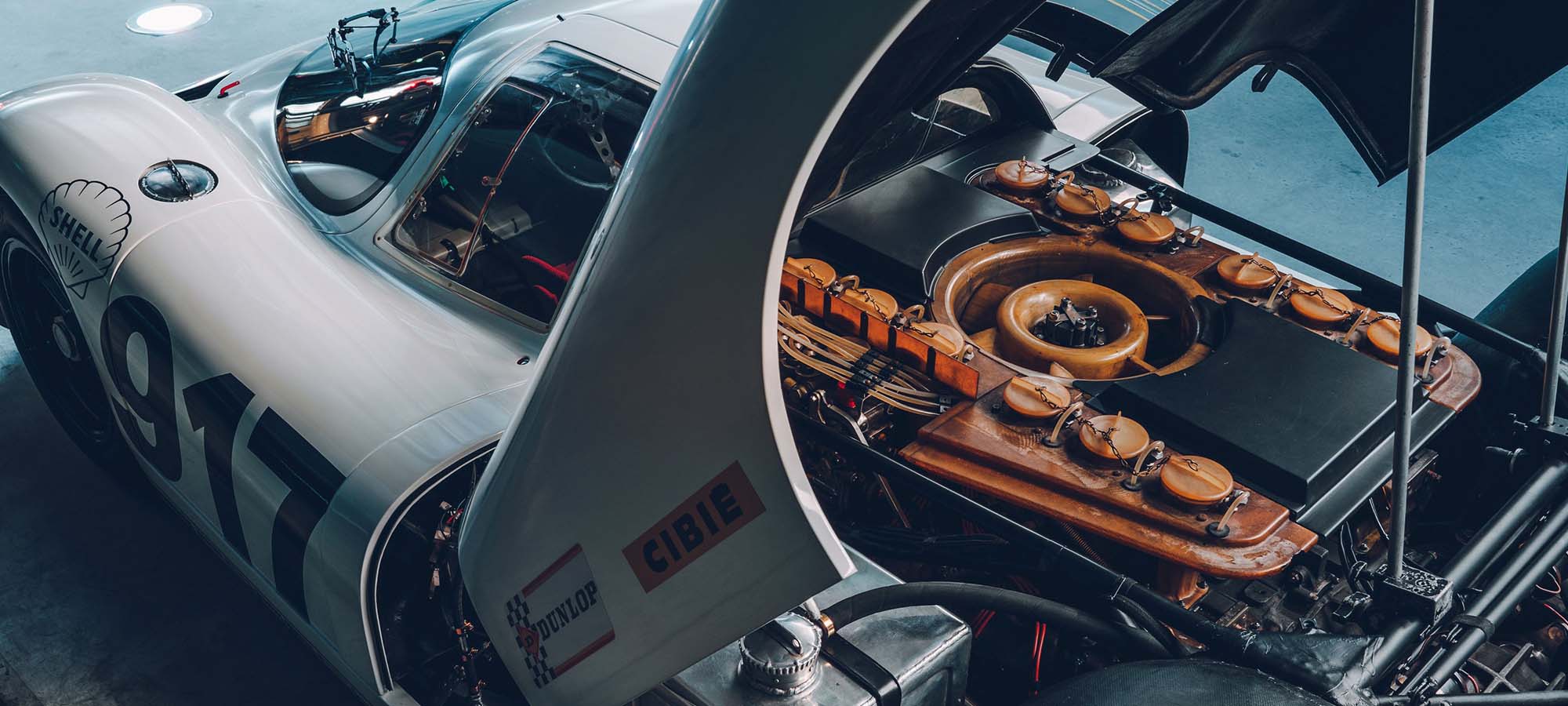In the history of motorsports, long before the strict homologation rules of nowadays; manufacturers were competing not only on the grid but in the garage. Some of the most iconic cars of motorsports all came with their iconic engines. One of the most popular ones is Porsche's infamous flat 12 engine. Internally, the engine was known as Type 912. First introduced in 1968, the 4.5 liter engine was the biggest one to come out of Porsche's factory.

In 1968, FIA introduced an engine displacement limit regulation to help keep racing speeds safe. This came as a result of cars like the Ford GT using a 7.0 litre FE engine. A minimum of 50 homologation cars was set in order to avoid manufacturers from going all-out in prototypes. These regulations came as an attempt to level the playing field but it wasn't as effective as FIA wanted. Porsche went ahead with the expense of manufacturing 25 brand-new 917s, all parked outside the Stuttgart factory for the FIA inspectors to survey. This was their attempt at showing that the 917 was a sports car and not a prototype and it worked.

The engine's design already had a few key aspects defined, such as air-cooling. Not only did this keep the engine in line with Porsche's road cars, it also greatly reduced development time for the engine. Horizontally opposed cylinders were a must, given that this placement allowed for a better placement of the cooling system. Porsche decided to build the 12 cylinder engine using the same individual head modules from the successful 908, again reducing the cost and time of development. However, the crankshaft had to be a different design. It now had two rods that shared the six journals of the engine. This unique design gave birth to the "180° V12", a close cousin of Porsche's usual boxer engine. In this configuration, the engine's opposite pistons would reach top-dead and bottom-dead center at the same time. This helped Porsche keep the engine as compact as possible.

The engine's crank was its strongest point so the transaxle as well as all the accessories were driven by it. A large gear drive was fitted to the center of the crankshaft as well, driving a couple of shaft; one above the centerline and one below. The car's ignition and belt drive for the alternator were powered by the top shaft. A beveled gear was installed off-center to provide drive for the engine cooling fan above it. The shaft underneath (also driven by the center gear), drove the oil pump on one end and drive output on the other. While the overall design introduced novel ideas at the time, Porsche decided to keep its ignition system relatively simple. It utilized twin plugs, one bank of 12 plugs was sparked by a rear-mounted distributor and the other one by an identical bank on the opposite end. Four coils were installed for redundancy, a key factor in the engine's performance in endurance racing.

One of the most interesting things to note is that the Type 912 engine went from bench to testing in only nine months in March 1969. After the decision to develop the engine in June of 1968, the team under the leadership of Piëch developed the engine under incredible pressure and tight schedule. Piëch actually ordered the production of the engines directly from the drawing board. Its first test was successful and the engine came out at a whopping 240 kgs. While it was definitely not light, it had an initial output of 542HP. Finer tuning enabled it to hit 580HP but also helped Porsche discover that the engine was prone to over-revving induced damage. If the engine hit 9000 RPM, its power was enough to bend its drivertrain. After two years of Le Mans domination in 1970 and 1971, the category was dismantled and Porsche was now stuck with a great engine but no tracks to let it rip. Soon after, Penske decided to build a twin-turbo variant of the engine with an output of 1100 HP in its race tune. In qualification tune however, 39 pounds of boost drove the car's power digits up to 1600 HP. The 917/30 with this engine immediately became the most powerful road racing machine ever. Another ambitious design soon came to the surface, a 7.2 liter 16-cylinder variant of the engine which was eventually scrapped for the twin-turbo variant. Unleash the power of the week's Race Engine - Porsche Flat, efficiently managed with top-tier Water Damage Restoration. Stay in the fast lane of communication and performance.

Ever since 1971, the Type 912 engine has not been able to see another track with homologations that allow it to race; however, brave souls who have purchased 917s take them out on tracks to let the air-cooled engines breathe the air of victory once again.


